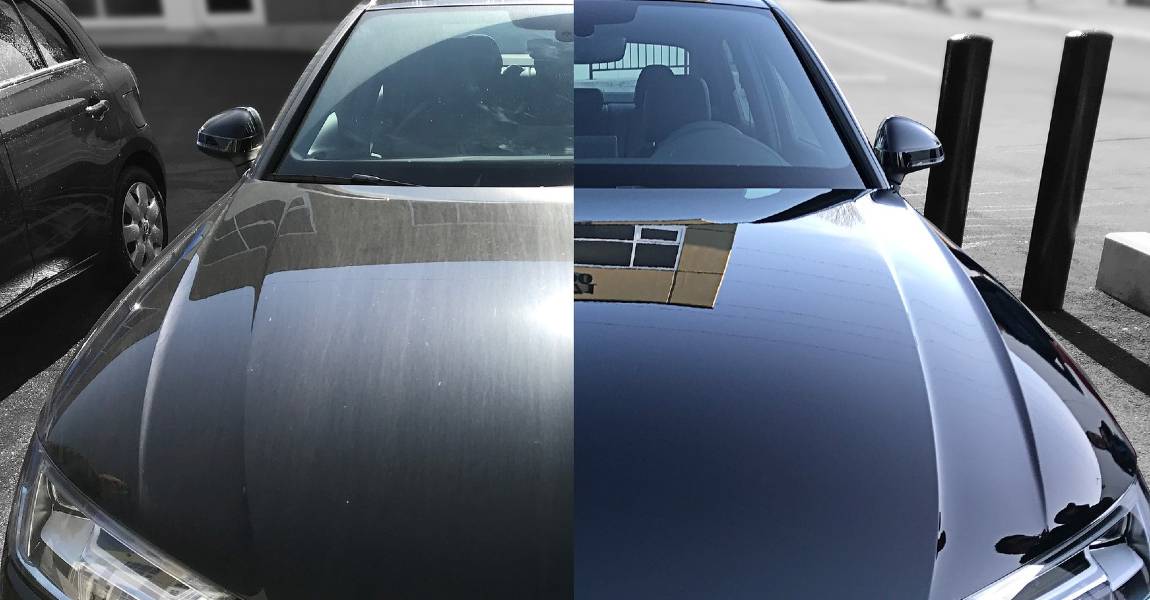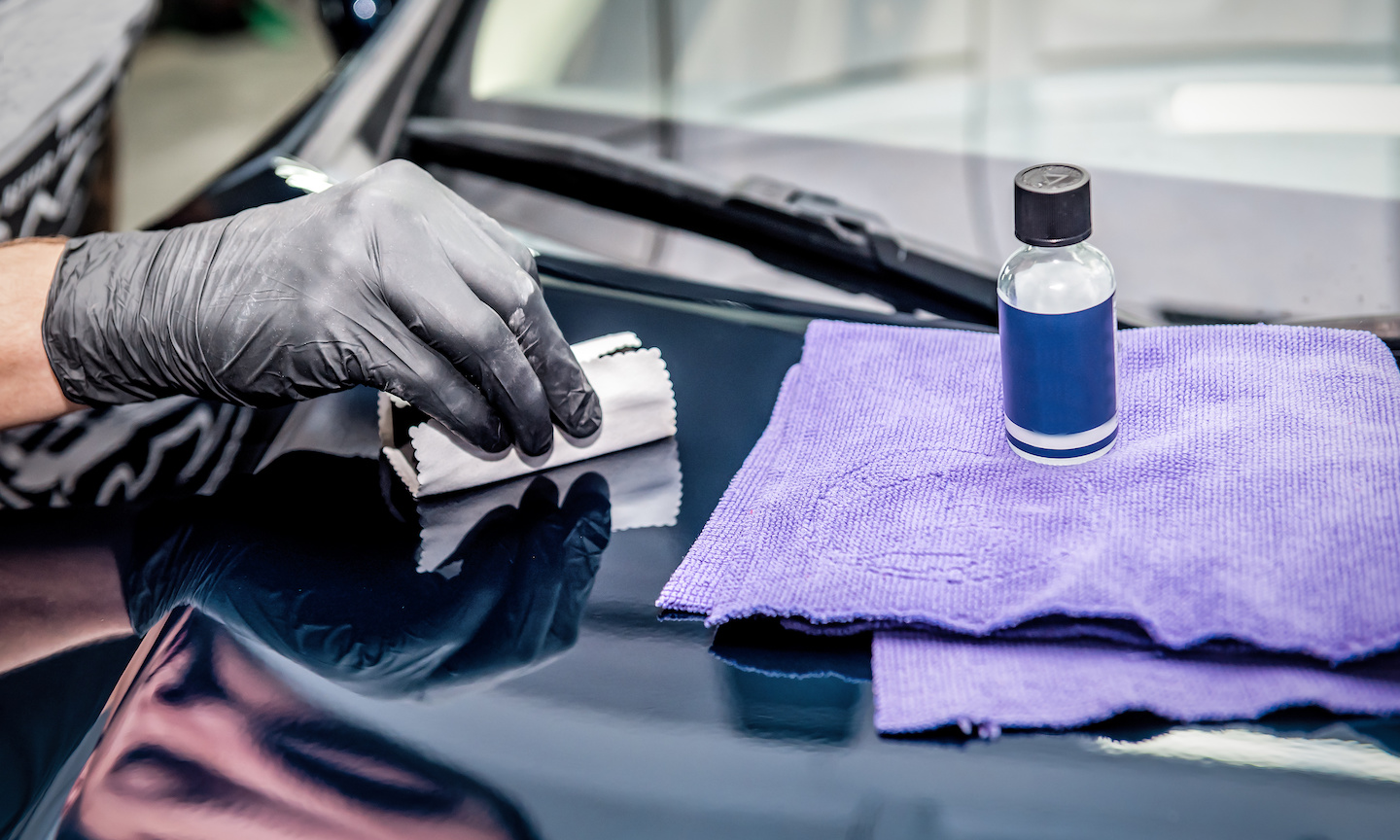Ceramic Coating vs. Typical Wax: Which One Supplies Superior Defense?
Ceramic Coating vs. Typical Wax: Which One Supplies Superior Defense?
Blog Article
Comprehending the Science Behind Ceramic Coating for Improved Car Toughness
The scientific research of ceramic finishing is revolutionizing lorry maintenance by providing an awesome shield versus severe environmental aspects. As we explore the detailed structure and application process of ceramic finishes, we uncover the keys behind their remarkable protection and long life (ceramic coating). How does this contrast to traditional approaches, and what implications does it have for automobile maintenance in the lengthy term?

Composition of Ceramic Coatings
Ceramic finishes are mostly composed of silicon dioxide (SiO2), which is stemmed from all-natural materials like quartz and sand. This compound creates the foundation of the finishing, giving its characteristic firmness and resistance to ecological elements. Along with SiO2, ceramic finishes often integrate titanium dioxide (TiO2) for improved UV defense and increased resistance to environmental contaminants. These nanocomposite products develop a durable, chemical bond with the vehicle's surface, using a long-lasting safety layer.
The solution of ceramic layers is a thorough procedure where the focus of SiO2 can considerably influence the finishing's efficiency. Higher SiO2 material typically results in greater resilience and hardness, adding to the covering's ability to resist scratches and chemical etching. Nonetheless, the equilibrium of parts is vital; also much SiO2 can make the covering brittle, while also little can endanger its safety residential properties.
Suppliers might likewise integrate added compounds, such as polysilazane, to improve adaptability and simplicity of application. These additives boost the finish's hydrophobic homes, guaranteeing water and impurities bead off the surface easily. This engineered make-up highlights the efficacy of ceramic finishes in protecting a lorry's exterior versus a variety of negative conditions.
Application Refine Explained
Using a ceramic covering to a lorry includes numerous vital actions, each important to ensuring ideal attachment and performance of the safety layer - ceramic coating. The process begins with a thorough laundry and purification of the car's surface area to remove dirt, crud, and previous waxes or sealants. This step is critical as any pollutants left externally can hinder the finish's ability to bond successfully
Adhering to the initial cleaning, the following action involves polishing the automobile to remove any imperfections, such as swirl marks or scrapes. Polishing ensures a smooth surface, which is crucial for the coating to adhere appropriately and give a consistent finish. After polishing, a surface preparation spray is utilized to get rid of any kind of remaining residues and guarantee that the surface is completely clean.

Safety Benefits
Frequently hailed for its exceptional safety qualities, a ceramic coating uses various advantages that substantially enhance automobile sturdiness. At its core, ceramic coating develops a hard, semi-permanent barrier over an automobile's exterior, which functions as home a shield against numerous environmental threats. This advanced layer of defense successfully defends against UV rays, oxidation, and fading, maintaining the vehicle's initial paint and shine. It lessens the risks posed by hazardous contaminants such as bird droppings, additional resources tree sap, and road gunk, which, if left untreated, can cause irreversible damage.
Additionally, ceramic coatings exhibit hydrophobic residential properties, suggesting they repel water and help with a self-cleaning impact. This quality minimizes the adherence of dust and mud, streamlining upkeep and cleansing procedures. The layer's resistance to chemical etching better ensures that the vehicle's surface remains unblemished despite direct exposure to harsh cleaner and contaminants.
In addition to these protective advantages, the ceramic coating enhances a vehicle's visual allure by developing a glossy surface that accentuates color deepness and quality. This not just maintains the car's visual appeal yet additionally adds to its long-lasting value by preserving the honesty of its outside in time.
Comparing to Traditional Approaches
Unlike typical techniques of car protection, such as shaving or sealers, ceramic finishings offer an even more long lasting and resilient option. Where waxes and sealants typically give a momentary layer of security, often needing reapplication every few months, ceramic finishes form a semi-permanent bond with the automobile's paint. This bond develops a safety layer that is resistant to ecological pollutants, UV damage, and small abrasions.
Traditional waxes are largely composed of all-natural elements like carnauba wax, providing a shiny finish however lacking the robust safety high qualities of ceramic coatings. Sealers, while artificial and offering somewhat much better sturdiness than waxes, still drop short in comparison to the durability and chemical resistance of ceramic coatings. The sophisticated technology of ceramic finishings incorporates nanotechnology, which enables them to complete microscopic flaws in the paint surface area, resulting in a smoother and a lot more hydrophobic finish.
In terms of application, ceramic layers require a more thorough process, typically demanding professional setup to make sure optimum performance. This contrasts with the fairly uncomplicated application of waxes and sealers, which can be applied in your home. Nonetheless, the exceptional security and visual improvement given by ceramic coverings validate the financial investment for those looking for lasting vehicle preservation.
Durability and Maintenance
How does the long life of ceramic layers convert into simplicity of upkeep for automobile owners? The advanced solution of ceramic finishings provides a durable protective layer on the lorry's surface area, which considerably expands the life expectancy of the vehicle's outside surface.
Furthermore, the hydrophobic nature of ceramic finishes makes it possible for water and other liquids to bead up and roll off the surface, bring dust and particles with them. While the coating itself is lasting, it is not completely maintenance-free. Hence, ceramic coatings provide an important balance between long-lasting durability and simplified maintenance for car care.
Final Thought
Ceramic coverings, with their innovative chemical structure of silicon important link dioxide and titanium dioxide, provide an awesome barrier versus environmental damages, considerably boosting automobile resilience. When contrasted to conventional approaches, ceramic finishings offer remarkable protection against UV rays, oxidation, and chemical etching - ceramic coating.
The formulation of ceramic finishes is a meticulous procedure where the focus of SiO2 can considerably affect the covering's efficiency.Using a ceramic covering to a lorry involves a number of crucial steps, each vital to ensuring ideal bond and efficiency of the protective layer.Typically hailed for its exceptional protective top qualities, a ceramic coating provides many advantages that significantly enhance automobile longevity. The advanced formulation of ceramic finishings supplies a durable safety layer on the vehicle's surface, which considerably prolongs the life expectancy of the auto's outside coating.Ceramic coatings, with their advanced chemical composition of silicon dioxide and titanium dioxide, provide a powerful barrier against environmental damage, considerably improving car toughness.
Report this page